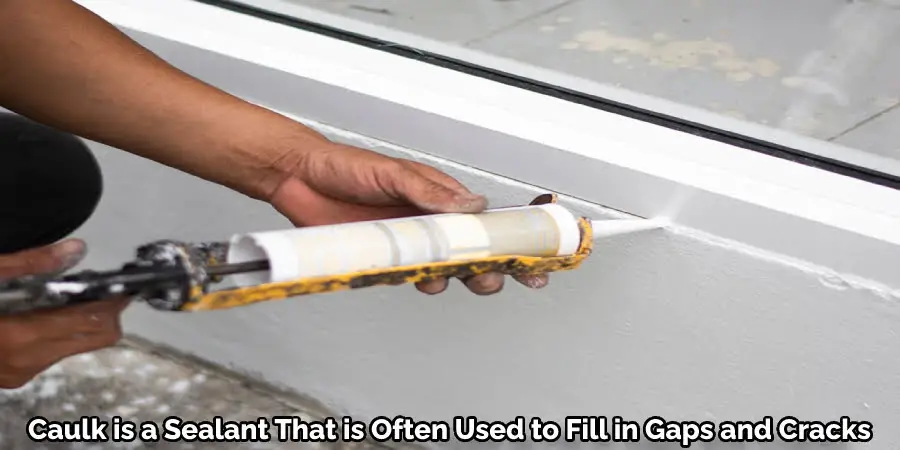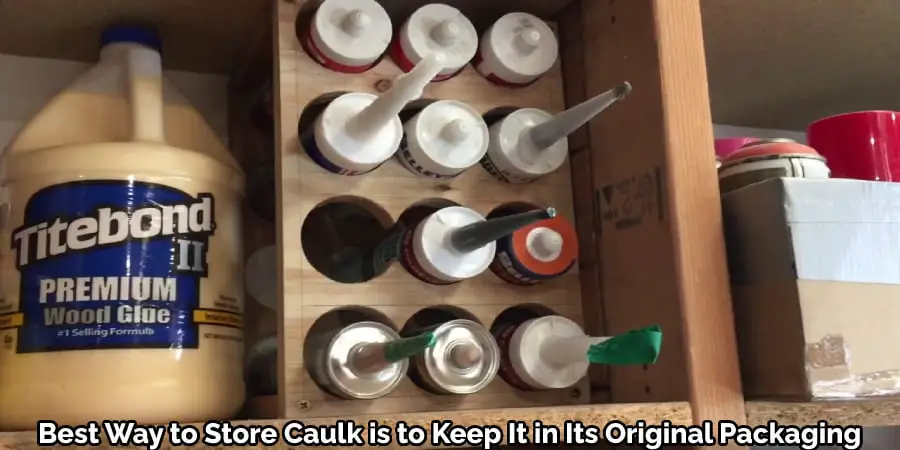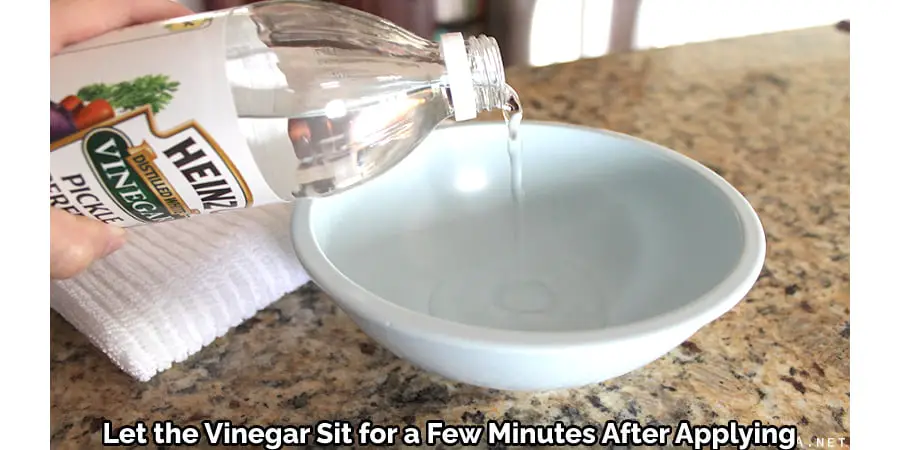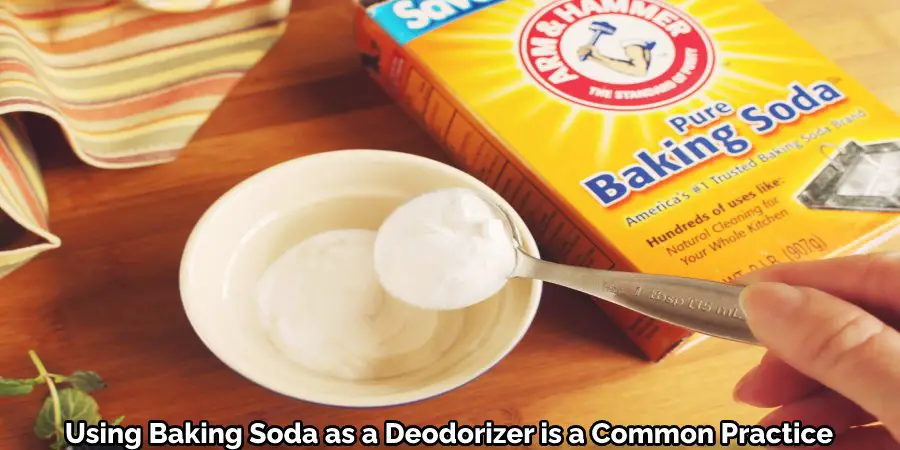Caulk is a substance used to seal joints. It is often used around windows and doors but can also be found in other places around the home. Caulking may come in handy, but it may also create a bad smell. If you are having a hard time removing the toxic odor from the caulking, don’t fret. There are a few things you can do to get rid of the smell and make your home smell fresh again. In this article, you will get to know how to get rid of caulk smell.

What is Caulk?
Caulk is a sealant that is often used to fill in gaps and cracks on various surfaces. It helps to prevent water and air from penetrating the surface, making it more weather-resistant and longer-lasting. Caulk can be made from a variety of materials, including silicone, latex, acrylic, and polyurethane. It is available in a variety of colors and finishes so that it can be matched to the surrounding surface.

Ingredients They Contain
The caulking material is a mixture of ingredients that are designed to fill and seal cracks in a surface. The most common ingredient in caulking is silicone, which is a polymer that forms a flexible, water-resistant seal. Other ingredients may include acrylics, urethanes, and polysulfides.
The Best Way to Store Caulk
There are a few different ways to store caulk, but the best way is to keep it in its original packaging. If you don’t have the original packaging, you can store it in a sealable storage container, like a Ziploc bag. It’s important to keep the caulk dry, so you should avoid storing it in a damp place, like a basement.

The Cause of the Smell:
The first possible cause of the smell is that the caulk is moldy.
Another potential source of the smell is that the caulk was applied incorrectly.
A third possibility is that there may be chemicals in the caulk that are causing the odor.
Finally, another explanation for the smell could be an issue with the sealant on your window or door.

How to Get Rid of Caulk Smell
The following methods are guides for getting rid of the caulk smell :
Vinegar:
Caulk is a material used to fill in the gaps between two surfaces, most commonly used around bathtubs, showers, and sinks. Caulk can sometimes emit an unpleasant smell, but this can be eliminated with vinegar. Apply white vinegar to the caulk with a spray bottle. Allow it to soak for a couple of minutes, then wipe away the mess with a rag. The smell should disappear as well!

Drawbacks:
One potential drawback of using vinegar for getting rid of caulk smell is that it may not be as effective as other methods. Additionally, vinegar can be harmful if it is ingested or comes into contact with skin, so it is important to take precautions when using it. Vinegar may also have a strong odor that can linger for a while after it has been used.
Lemon Juice:
To eliminate the caulk smell, lemon juice can be an effective solution. Lemon juice is a natural disinfectant and will help remove the smell. We cut a lemon in half and squeezed the juice into a bowl. Then, dip a cloth into the lemon juice and wipe down the caulk. Finally, let the area air dry.
Drawbacks:
There are a few drawbacks to using lemon juice for getting rid of the caulk smell. First, lemon juice is a volatile organic compound, meaning it can evaporate quickly and release fumes that can be harmful to breathe. Second, lemon juice is a weak acid and can corrode metal and other materials. Finally, lemon juice can leave a residue that is difficult to remove.
Borax:
Borax is effective in absorbing the odors of caulk. Borax is a natural cleaner and deodorizer that can break down the molecules causing the smell. Mix one cup of borax with one gallon of warm water to get rid of the caulk smell. Soak a cloth in the solution and squeeze out any excess fluid. Wipe down the areas where the caulk was used.
Drawbacks:
There are a few drawbacks to using borax for getting rid of the caulk smell. Borax may be difficult to locate in some areas and can be expensive to purchase. Second, borax can be harmful if ingested, so it’s important to take precautions when using it, such as wearing gloves and goggles and making sure it’s not ingested.
Baking Soda
The use of baking soda as a deodorizer is a common one and is said to work well for eliminating the smell of caulk. To use baking soda to eliminate the smell of caulk, mix it with water to form a paste and apply it to the area where the smell is coming from. Let the paste sit for a few minutes before rinsing it away with water.

Drawbacks:
There are a few drawbacks to using baking soda to get rid of the caulk smell. First, it can take a while for the baking soda to work. Second, it can be messy to use. Third, breathing in baking soda dust can be dangerous. Finally, it may not work for all types of caulk smells.
Peroxide
You can get rid of the caulking smell with peroxide by mixing it with water in a spray bottle. Use the peroxide remedy to spray on the caulking and let it soak for a few minutes. Wipe the caulking down with a wet cloth to remove any residue.
Drawbacks:
When considering using hydrogen peroxide to remove the smell of caulk from a room, there are several drawbacks to consider. One is that hydrogen peroxide is a strong oxidizing agent and can cause damage to surfaces and fabrics. For this reason, it is important to test it in an inconspicuous area before using it liberally. Additionally, hydrogen peroxide can be expensive and inconvenient to use, as it is not always readily available at home.
Conclusion
In conclusion, there are a couple of ways in which you can deal with the smell of caulking. One is to allow the smell to dissipate over time. Another method is using a domestic sanitizer or air freshener to get rid of the odor. A final option is to use a ventilation system to remove the smell from the area.
Frequently Asked Related Questions
How Long Does It Take for Caulking Smell to Go Away?
The smell of caulk can be a little overwhelming when you first apply it, but it usually goes away after a few days. However, if the smell persists, something might be wrong with the caulk or your application process. It’s best to consult a professional to help you figure out what’s going on.
Is the Smell of Caulking Toxic?
There is no definitive answer to this question, as the toxicity of caulking fumes depends on a number of factors, including the specific ingredients used in the caulking. Some types of caulking may contain volatile organic compounds (VOCs), which can cause health problems if inhaled in high quantities. However, most caulks today are low in VOCs or even non-toxic, so the smell of caulking is not typically considered to be toxic.
How Long Does Caulk Take to Dry?
Caulk is often utilized to fill in the gaps between surfaces. It is typically applied with a caulking gun, and it can take a while for it to dry. Caulking can set anywhere from 1 hour to several days, depending on the kind of caulk used. During this time, it is important to avoid getting the caulk wet, as this can cause it not to be set properly.
How Long After Caulking Can You Shower?
Caulking is a substance that is used to seal the gaps between two surfaces. It is usually applied to the seams of a bathtub, sink, or shower. Once the caulking is applied, it is important to wait for it to dry before using the shower. The amount of time required to take a shower will depend on what type of caulk was used.
Generally, you will need to wait at least 24 hours before using the shower.
Can You Caulk Over Caulk?
Some debate exists on whether or not to caulk over existing caulking. Some argue that doing so will create a more watertight seal and prolong the life of the caulking, while others maintain that it will cause the caulking to fail prematurely. It is necessary to understand the unique characteristics and uses of of the various caulking materials available.
What is the Difference Between Silicone and Caulk?
Silicone is a synthetic polymer that is typically made of carbon, hydrogen, and oxygen. It is often used in sealants and adhesives because it is heat resistant and does not shrink. Caulk, on the other hand, is a type of sealant that is made from a variety of materials, including silicone. It is typically used to fill in cracks or gaps and can be watertight.
You May Also Find These Pages Useful
How To Smooth Dried Silicone Caulk

